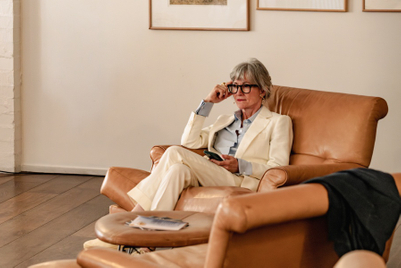
Snapchat has found its groove as the go-to ad platform for direct-response advertising, which has more than doubled in revenue and now makes up more than half of the company’s total revenue.
The messaging app’s parent company, Snap, reported total revenue of $462 million for the first three months of 2020, up 44% year on year.
Direct-response advertising has more than doubled as a share of its total ad revenue over the past two years, Snap added.
Evan Spiegel, Snapchat’s founder and chief executive of Snap, said: "We are seeing some bright spots amongst direct-response advertisers, especially those who provide activities or products that our community can enjoy at home. In the short term, we are shifting sales resources and pulling forward some investments in direct response to better serve the advertisers who are trying to reach our audience during this time."
Movie studios, for example, have been big advertisers on Snapchat, such as Sony, which partnered the platform in June 2019 to create a Lens for the release of Spider-Man: Far from Home. Spiegel added that Snap is looking to help film studios pivot to digital releases with products that are designed to track titles over a flexible release time period.
Mobile games have also targeted Snapchat as a way for marketers to reach millennial and Generation Z consumers, who are relatively expensive to reach through more traditional media as they engage less with channels such as TV. Many of these ads are interactive, with users invited to play a limited version of the game within an ad and then given a link to download the app.
Noam Sagie, director of marketing at Plarium, which creates mobile game Vikings: War of Clans, said the company had more than quadrupled its spend on Snap since last summer.
He said: "We integrated with Snapchat's API and developed a technology for accurately reaching potential players. We heavily invested in the creative customisation of our ads, focused on bidding with purchase optimisation… Players coming from Snapchat are 30% better than Plarium's average in terms of seven-day retention rates. Also, these players have significantly higher intent than the average player to convert from the free version of the app to paying users."
Spiegel added that Snap has made "deep investments in direct-response advertising" over the past few years, including advanced bidding and campaign management tools, as well as ad formats that are specially designed for mobile apps and ecommerce.
Snap’s financial disclosure last night (Tuesday) also indicated how badly the online advertising sector is being hit by the coronavirus pandemic as businesses close due to social-distancing restrictions and worldwide travel grinds to a halt. The company’s year-on-year growth in January and February was up by 58%, but dropped by 25% in March when lockdown measures took hold in Europe and North America, Snapchat’s key markets.
As brands’ ad budgets tighten, Snap is evidently positioning itself as a more effective direct-response platform for certain advertisers, given that the advertising-reliant tech company has a much smaller reach than Google and Facebook.
Snap said its average daily active user growth accelerated to 20% year-over-year for the quarter to 229 million.
Twitter, another social media platform whose audience is small relative to the so-called digital duopoly, announced in February that it was developing DR ad formats.
Snap outlined three priorities amid the hole in advertising demand during the pandemic: improving its ranking, optimisation and measurement to drive relevance and deliver ROI; building out its sales and marketing functions; and delivering innovative ad experiences through video and augmented reality.
The company is also focusing its sales teams on brands that might see an increase in business because of the lockdown, including "gaming, home entertainment, ecommerce and consumer packaged goods".
Snap still operates at a loss; its pretax loss reached $305.2 million in the first quarter – marginally better than the same period in 2019, when it posted a $310.1 million pretax loss.




.jpg&h=334&w=500&q=100&v=20250320&c=1)


.png&h=334&w=500&q=100&v=20250320&c=1)



.png&h=334&w=500&q=100&v=20250320&c=1)

.png&h=334&w=500&q=100&v=20250320&c=1)

.jpg&h=268&w=401&q=100&v=20250320&c=1)





.png&h=268&w=401&q=100&v=20250320&c=1)